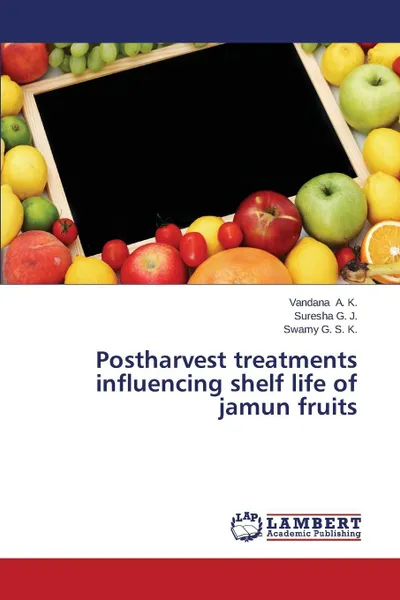Postharvest treatments influencing shelf life of jamun fruits 12+
2014
148 страниц
Категория: Научная литература
ISBN: 9783659616136
Язык: Английский
Где найти книгу?
📖 Jamun (Syzygium cumini Skeels) is an important minor fruit is an evergreen tropical tree in the flowering plant family Myrtaceae. Syzygium cumini is native to Bangladesh, India, Nepal, Pakistan, Sri Lanka, Malaysia, the Philippines, and Indonesia. The fruits develop by May or June and resemble large berries. The fruit is oblong, ovoid, starts green and turns pink to shining crimson black as it matures. The fruit has a combination of sweet, mildly sour and astringent flavour and tends to colour the tongue purple. The pulp of the fruit, extracts from the bark and seeds is of great benefit when it comes to lowering of blood glucose level. The Shelf life of the fruits is very less (2-3days) limiting its use as a fresh form. Hence, an attempt is made to extend its shelf life by using various postharvest treatments and storage them in cold storage. Various physiological and biochemical changes were recorded during the storage. Postharvest treatments really influenced the quality and shelf life of jamun fruits stored under cold conditions.
Мнения
